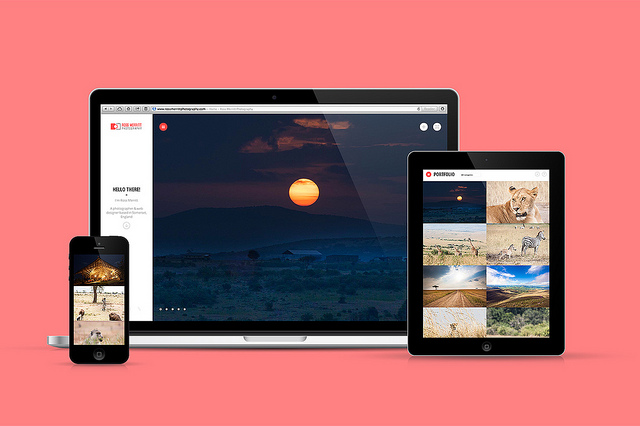by Hugh Graham, Principal, Twine Studios
Creating an effective digital marketing program is a daunting task for any organization. It can feel even more insurmountable to a small organization with limited budgets. Just as soon as you get one item checked off your to-do list, another pops up. How do you set priorities when you’re being challenged to manage desktop sites, mobile sites, native and web applications, search engine optimization, social media sites, customer relationship management? The jargon alone is enough to make you go more than a little crazy, and then it changes every time you turn around.
The truth is, as an experience designer who has been crafting interactive solutions in travel and tourism for just about 20 years, it sometimes feels just about as confusing for myself as it is for my clients. We all need to reset our expectations and rebuild our plans on a regular basis. But, there are some fundamental approaches you can use to streamline your planning and development process. In this article I’ll outline some steps you can take in deciding where to go next and what to do first.
The Big Decision: Should You, Could You, Would You?
But there is also a broader question regarding whether it is time to reconsider your entire digital marketing ecosystem. Is now a good time to invest significant resources into rethinking the design and content of your website and your other digital properties?
I believe the answer to this question is a qualified yes, and for the following reasons.
- Technically, now is a good time to make an investment
The basic building blocks on which all digital systems are built is finally reaching a level of maturity where what you develop now should remain stable and useful for a period of time. For instance, the basic languages the web is built on, html and css and javascript, are more stable and universally accepted than in previous incarnations. Yes, there are still some older browsers (specifically Internet Explorer 6 and 7) that need to be contended with, but they are on the way out. In addition, Content Management Systems (CMS’s, such as Wordpress, allow you to manage and update your own content) have matured and are more stable, robust, and user friendly than they were in the past. - The Device and Social Media Landscapes Have Stabilized
The plethora of devices we’ve seen hit the market in the past few years, including mobile, tablet, laptop, and desktop, are finally pretty well fleshed-out. Touchscreens are ubiquitous, and technical frameworks (for instance, themes in Wordpress) are set up to support them. Also, the explosion of social media outlets has slowed, which will allow you to decide on what to support and prioritize as part of your marketing efforts. - You Can Improve Your Marketing Cost-Effectiveness
Any decision on whether or not to invest in new systems must be tempered with the need to balance hard costs and investment. By taking a hard look at your priorities, and simplifying and prioritizing your digital channels of engagement, you can improve your marketing productivity while maintaining or even decreasing your level of effort.
Focus on Effective Platforms for Engagement
As we’re all painfully aware, the connected world of digital interactivity has presented us with a divergence of devices and ways to connect. Big screens, small screens, touch screens, web applications, native applications, photo sharing, video sharing, microblogs and more.
It’s easy to get distracted by all the various channels of communication, which can lead to spreading yourself too thin. As you begin to develop your strategy, think about what are your most effective communication vehicles, and how those different channels interconnect. You don’t need to be everywhere, and if you try you will almost certainly fail. Look for ways to simplify your choices. But how do you decide what works and what doesn’t?
First: Understanding Your Audience

Perhaps the most important shift in the connected world is the movement from consumer to partner or co-creator. There are more choices out there, and people are better informed than ever before.
In the Adventure Travel industry, this presents both a tremendous opportunity and a considerable challenge. Your clients and potential clients are more demanding than those in many other industries, and they need to feel they are being included in a conversation rather than being spoken to. They are part of the story, and if you don’t find ways to include them in the discussion they will most likely take their interest elsewhere.
The travel engagement cycle has been widely discussed; from exploration and inspiration to booking, and traveling and sharing, there is a typical looping path that travelers follow. Of course, this cycle is unique and personal to each individual, and the personalization is accentuated in the adventure travel market. Though ATTA defines adventure travel as including a combination of physical activity, cultural exchange, and interaction with the environment, the Adventure Travel Market Study released in August 2013 also identifies over 25 different primary activities associated with adventure travel. And this doesn’t include secondary activities that might influence a traveler to select one trip rather than another. What are the differentiating activities that make your organization unique?
Beyond their preferred activities, it’s also important to understand other characteristics of your target audience, including their values and their behaviors. From a values perspective, is their top priority for personal health, environmental health, cultural health, or a combination of all three? Or do they have a different set of values altogether? From a behavioral perspective, how do they consume media, and what type of media do they prefer? And, how do they share and connect?
The intention of your audience analysis is not to narrowly pigeonhole your audience, but rather to uncover some insights and guidance to influence your choices and priorities in terms of platform, design and content.
Quick Tip: You don’t have to hire a research firm to get a sense of your audience’s activities, values and behaviors. Why not send a ‘friendly’ email to some of your past customers, asking them to help you communicate more effectively with them? You may be surprised at how many are willing to help.
When Is A Website Not A Website?

As you move from research, insight and strategy toward making design decisions, it’s important to consider the changing nature of your website. Although still important for a variety of reasons, the corporate website is no longer a standalone destination. Instead, it is a hub that connects your various booking, content marketing and social media initiatives.
It wasn’t long ago that your desktop site was the be-all and end-all. Then, there was a push for separate mobile (or m-dot) sites to serve some variety of phones. Now, the pendulum has swung back toward a more integrated approach, and it seems likely that it will stay this way. Though there are still some times when I can understand the argument for building a separate mobile site, there are many compelling reasons to create a single site that will serve all devices.
A website that works on all devices requires a flexible framework (usually called ‘Responsive’ or ‘Adaptive’) that changes both layout and content based on the pixel width of the browser window on your device. There are numerous variations in terms of how these systems are implemented, but they have a number of advantages to static width layouts.
One big advantage is that they can offer optimized viewing and content at a variety of different widths, including very wide and very narrow displays and everything in between. Most templates or themes also support touch screen and mouse-based interactions, so there is no need to restructure the design to work on different devices.
There are also advantages from a Search Engine Optimization (SEO) perspective, because search services like Google don’t have to index multiple sites. Your keywords are consistently indexed for all viewers. This has the added plus of providing your site visitors with an easy way to save and share your site, both for their own use (for instance, through Evernote) and with their preferred social networks. The address remains the same no matter where it is accessed from.
Creating an effective responsive web design requires a considerable amount of thought and planning, with a focus on simplifying interactions and prioritizing and restructuring content. But, if you make the investment you will likely find that your new site will serve you well as the crux of your interactive initiatives. Users will be able to find it quickly and use it wherever they are in the travel planning process. But, it’s only one part of an effective Digital Marketing Ecosystem.
Quick Tip: There are a number of websites (for instance, starbucks.com and www.flowfestival.com ) that make use of a responsive framework. Take a look at these for inspiration on how to organize your design and content.
Content and Social Media Strategies

If your responsive website is to serve as the hub of your digital marketing activities, there are two other components to the strategy that support this core: Content Marketing and Social Media.
Content Marketing is core to how you continue to tell your story and get your message out online. It can take a number of different forms, from video and photos to blog posts and Twitter posts. This is one situation where simplifying your strategy can serve you well, as trying to manage too many outlets will cause all your efforts to suffer. Pick those outlets where you can be successful and where you sense that you can connect with your audience.

Are you adept at creating videos that tell your story? A Youtube or Vimeo channel could be a good solution. Have strong photography and want to focus on visual storytelling? Maybe your best option is on Flickr or Tumblr. Or, if your audience is Facebook friendly, maybe that’s where you put your focus. Don’t have the time to post ‘micro’ updates ten times a week? Maybe Twitter shouldn’t be on your priority list.
Whatever choices you make, look for content marketing approaches that will integrate with your core website and your social media strategy. Social media and content marketing need to work hand in hand. Whatever content you put out there (whether blog posts, photos, or videos) make sure there are shareable and visually engaging. Especially in the adventure travel world, visual storytelling is key to encouraging engagement.
What About Apps?

Native applications (applications built to run on a specific device, such as an iPhone or an Android) are great. Everybody loves them. And why not? They potentially encourage repeat usage, they can be optimized to take advantage of the phone or tablet’s internal operating system, and they are available at the click of a button. Do you want one?
Maybe not, and here’s why: most applications, even if they get downloaded, end up getting used very rarely. I’ve got lots of apps on my phone and tablet I’ve launched once and then never thought of launching again. Creating a native application without a clear strategy can be a significant waste of time and money.
For a lean company looking to create awareness, build interest and encourage engagement, you are most likely better off focusing on creating a responsive website to serve as the hub for your content marketing and social media initiatives.
Key Takeaways:
- Now may be a good time to rebuild your digital marketing ecosystem; the device, browser, and social media landscape has finally matured
- Think of your website as the hub for your digital marketing efforts, not as a standalone destination
- A ‘responsive’ web design requires a carefully thought out content and design, but can improve consistency, usability and SEO.
- Develop a targeted content and social media strategy, and don’t spread yourself too thin
- Native applications get a lot of hype, but they may not be worth the time and effort.
 I have 20 years of experience in people-centered design. As a former Director of User Experience for The1stMovement and Sapient, my focus is on using people-centered research, prototyping, and facilitation to help organizations develop and implement innovative ideas. I’ve worked with a wide range of clients throughout North America, Europe and Asia, in industries including travel and tourism, healthcare, and financial services.
I have 20 years of experience in people-centered design. As a former Director of User Experience for The1stMovement and Sapient, my focus is on using people-centered research, prototyping, and facilitation to help organizations develop and implement innovative ideas. I’ve worked with a wide range of clients throughout North America, Europe and Asia, in industries including travel and tourism, healthcare, and financial services.
At Twine Studios we work with companies, nonprofits, and agencies to align business strategies and operational capabilities with people-centered design priorities. Through this approach, we are able to create a shared vision leading to superior experiences that are scalable and sustainable over time.

